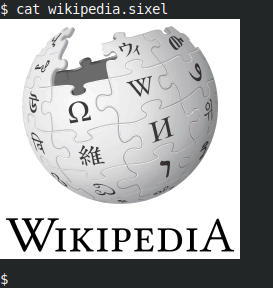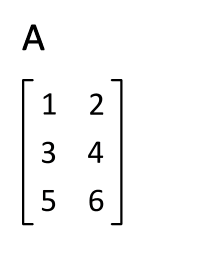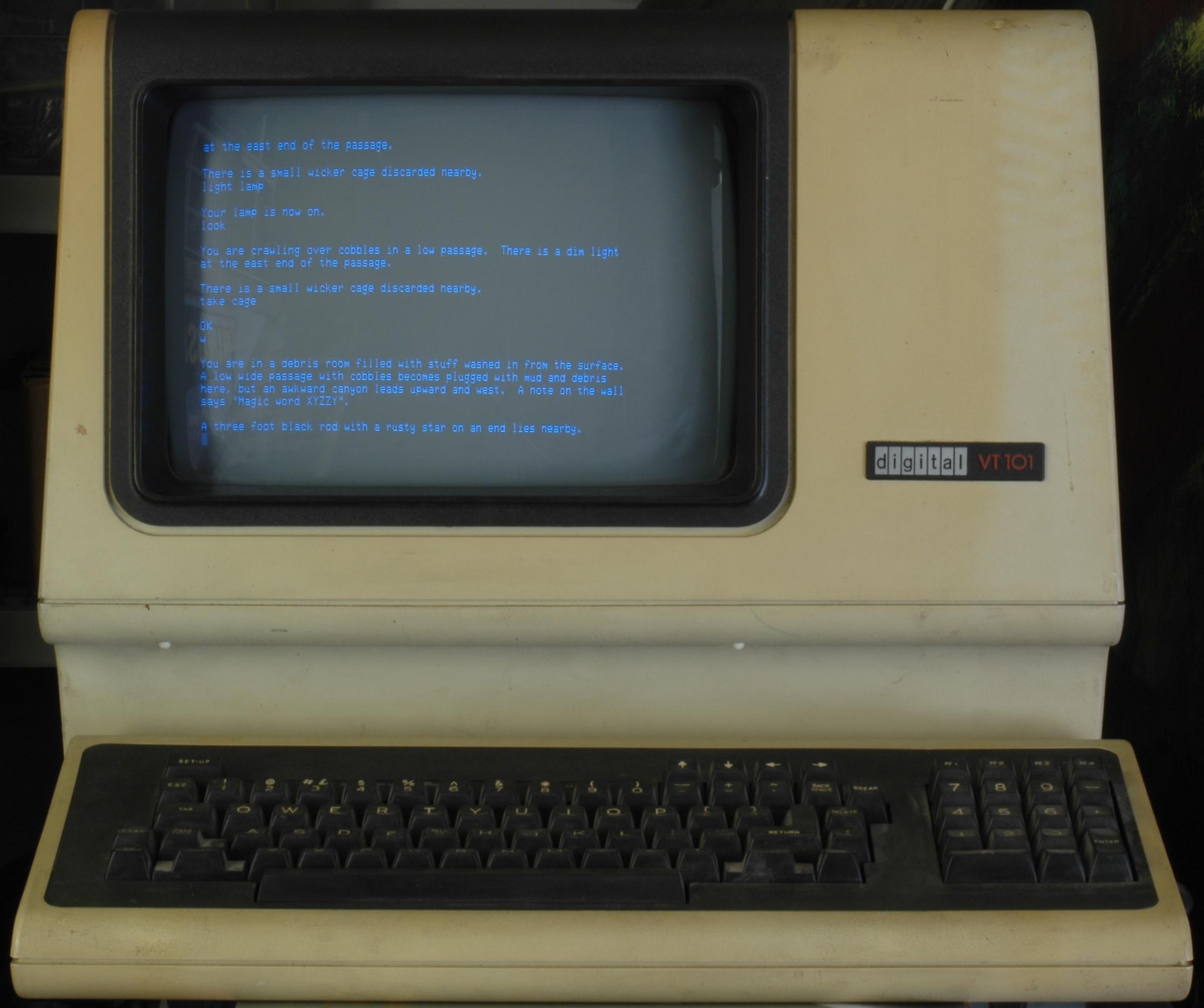|
VT320
The VT320 is an ANSI standard computer terminal introduced by Digital Equipment Corporation (DEC) in 1987. The VT320 is the text-only version, while the VT330 adds monochrome ReGIS, Sixel and Tektronix 4010 graphics, and the VT340 adds color. The 300 series replaced the earlier VT200 series, as a lower-cost system better able to compete with a number of VT220 clones that had entered the market. Foremost among these was the Wyse WY-60, introduced in 1986 with a form factor and feature set similar to the VT220, but including 4010 graphics and selling for only $699, compared to $795 for the base-model VT220 lacking graphics. The VT320 was introduced at $495, something of a surprise,David Bright"DEC VT320 late, but low prices surprises" ''Computerworld'', 31 August 1987, p. 16. forcing Wyse to lower their prices to $599. The VT320 was replaced by the VT420 in 1990, but the VT340 remained in production until all of these models were replaced by the VT500 series in 1994. Desc ... [...More Info...] [...Related Items...] OR: [Wikipedia] [Google] [Baidu] |
National Replacement Character Set
The National Replacement Character Set (NRCS) was a feature supported by later models of Digital Equipment Corporation, Digital's (DEC) computer terminal systems, starting with the VT220, VT200 series in 1983. NRCS allowed individual characters from one character set to be replaced by one from another set, allowing the construction of different character sets on the fly. It was used to customize the character set to different local languages, without having to change the terminal's Read-only memory, ROM for different countries, or alternately, include many different sets in a larger ROM. Many 3rd party terminals and terminal emulators supporting VT200 codes also supported NRCS. Description ASCII is a 7-bit standard, allowing a total of 128 characters in the character set. Some of these are reserved as control characters, leaving 96 printable characters. This set of 96 printable characters includes upper and lower case letters, numbers, and basic math and punctuation. ASCII does no ... [...More Info...] [...Related Items...] OR: [Wikipedia] [Google] [Baidu] |
VT220
The VT200 series is a family of computer terminals introduced by Digital Equipment Corporation (DEC) in November 1983. The VT220 was the basic version, a text-only version with multi-lingual capabilities. The VT240 added monochrome ReGIS vector graphics support to the base model, while the VT241 did the same in color. The 200 series replaced the successful VT100 series, providing more functionality in a much smaller unit with a much smaller and lighter keyboard. Like the VT100, the VT200 series implemented a large subset of ANSI X3.64. Among its major upgrades was a number of international character sets, as well as the ability to define new character sets. The VT200 series was extremely successful in the market. Released at $1,295, but later priced at $795, the VT220 offered features, packaging and price that no other serial terminal could compete with at the time. In 1986, DEC shipped 165,000 units, giving them a 42% market share, double that of the closest competitor, Wys ... [...More Info...] [...Related Items...] OR: [Wikipedia] [Google] [Baidu] |
VT420
The VT420 is an ANSI standard computer terminal introduced in 1990 by Digital Equipment Corporation (DEC). The 420 is the only model in the 400 series, replacing the VT320. There are no color or graphics-capable 400 series terminals; the VT340 remained in production for those requiring ReGIS and Sixel graphics and color support. The entire lineup of VT300s and VT420 was eventually replaced by the relatively unknown VT500 series starting in 1993. Description The VT420 is essentially an updated VT320, adding the multi-session capabilities originally introduced on the VT330 and VT340. Those two models include a system known as TD/SMP which allows two sessions to be multiplexed over a single serial connection to a compatible terminal server. Alternately, the two sessions can be supported by separate serial connections on those models with multiple MMJ ports. Using either method, the VT330/340/420 can either show the two sessions behind each other, using a key sequence to fli ... [...More Info...] [...Related Items...] OR: [Wikipedia] [Google] [Baidu] |
Sixel
Sixel, short for "six pixels", is a bitmap graphics format supported by terminals and printers from DEC. It consists of a pattern six pixels high and one wide (in black and white), resulting in 64 possible patterns. Each possible pattern is assigned an ASCII character, making the sixels easy to transmit on 7-bit serial links. Sixel was first introduced as a way of sending bitmap graphics to DEC dot matrix printers like the LA50. After being put into "sixel mode" the following data was interpreted to directly control six of the pins in the nine-pin print head. A string of sixel characters encodes a single 6-pixel high row of the image. The system was later re-used as a way to send bitmap data to the VT200 series and VT320 terminals when defining custom character sets. A series of sixels are used to transfer the bitmap for each character. This feature is known as soft character sets or dynamically redefinable character sets (DRCS). With the VT240, VT241, VT330, and VT ... [...More Info...] [...Related Items...] OR: [Wikipedia] [Google] [Baidu] |
TD/SMP
TD/SMP, short for Terminal Device/Session Management Protocol, was a terminal multiplexer system introduced by DEC on their VT330/340 terminals in 1987. The terminal-side was referred to as SSU. TD/SMP allowed data from two separate host sessions to be sent to a compatible computer terminal over a single serial port. The format was patented and never described in depth, limiting it to DEC's own terminal server A terminal server connects devices with a serial port to a local area network (LAN). Products marketed as terminal servers can be very simple devices that do not offer any security functionality, such as data encryption and user authentication. ...s and terminals. References Computer-related introductions in 1987 Digital Equipment Corporation Terminal multiplexers {{Compu-stub ... [...More Info...] [...Related Items...] OR: [Wikipedia] [Google] [Baidu] |
Modified Modular Jack
The Modified Modular Jack (MMJ) is a small form-factor serial port connector developed by Digital Equipment Corporation (DEC). It uses a modified version of the 6P6C modular connector with the latch displaced off-center so that standard modular connectors for telephone jacks cannot accidentally be plugged in. MMJ connections are used on Digital minicomputers, such as the PDP-11, VAX and Alpha systems, and to connect terminals, printers, and serial console servers. The MMJ connector has six conductors. As defined by DEC, the six pins are Tx and Rx for the data transmission, their return paths, and DSR and DTR for handshaking. The transmit and receive signals are differential: each signal is the voltage difference between the line and its associated ground, as opposed to a voltage on a single connector relative to a common reference. The electrical signaling is defined by the EIA RS-422 standard. The system can interoperate with RS-232 signaling by shorting the lower voltage sid ... [...More Info...] [...Related Items...] OR: [Wikipedia] [Google] [Baidu] |
Digital Equipment Corporation
Digital Equipment Corporation (DEC ), using the trademark Digital, was a major American company in the computer industry from the 1960s to the 1990s. The company was co-founded by Ken Olsen and Harlan Anderson in 1957. Olsen was president until he was forced to resign in 1992, after the company had gone into precipitous decline. The company produced many different product lines over its history. It is best known for the work in the minicomputer market starting in the early 1960s. The company produced a series of machines known as the Programmed Data Processor, PDP line, with the PDP-8 and PDP-11 being among the most successful minis in history. Their success was only surpassed by another DEC product, the late-1970s VAX "supermini" systems that were designed to replace the PDP-11. Although a number of competitors had successfully competed with Digital through the 1970s, the VAX cemented the company's place as a leading vendor in the computer space. As microcomputers improved in t ... [...More Info...] [...Related Items...] OR: [Wikipedia] [Google] [Baidu] |
Bitmap Graphics
upright=1, The Smiley, smiley face in the top left corner is a raster image. When enlarged, individual pixels appear as squares. Enlarging further, each pixel can be analyzed, with their colors constructed through combination of the values for red, green and blue. In computer graphics and digital photography, a raster graphic, raster image, or simply raster is a two-dimensional image or picture represented as a rectangular Matrix (mathematics), matrix or grid of pixels, viewable via a computer display, paper, or other display medium. A raster image is technically characterized by the width and height of the image in pixels and by the number of bits per pixel. Raster images are stored in image files with varying dissemination, production, generation, and acquisition formats. The printing and prepress industries know raster graphics as contones (from "continuous tones"). In contrast, '' line art'' is usually implemented as vector graphics in digital systems. Many raster man ... [...More Info...] [...Related Items...] OR: [Wikipedia] [Google] [Baidu] |
VT52
The VT50 is a CRT-based computer terminal that was introduced by Digital Equipment Corporation (DEC) in July 1974. It provided a display with 12 rows and 80 columns of upper-case text, and used an expanded set of control characters and forward-only scrolling based on the earlier VT05. DEC documentation of the era refers to the terminals as the DECscope, a name that was otherwise almost never seen. The VT50 was sold only for a short period before it was replaced by the VT52 in September 1975. The VT52 provided a screen of 24 rows and 80 columns of text and supported all 95 ASCII characters as well as 32 graphics characters, bi-directional scrolling, and an expanded control character system. DEC produced a series of upgraded VT52s with additional hardware for various uses. The VT52 family was followed by the much more sophisticated VT100 in 1978. Description These terminals supported asynchronous communication at baud rates up to 9600 bits per second and did not require ... [...More Info...] [...Related Items...] OR: [Wikipedia] [Google] [Baidu] |
VT100
The VT100 is a video terminal, introduced in August 1978 by Digital Equipment Corporation (DEC). It was one of the first terminals to support ANSI escape codes for cursor control and other tasks, and added a number of extended codes for special features like controlling the status lights on the keyboard. This led to rapid uptake of the ANSI standard, which became the de facto standard for hardware video terminals and later terminal emulators. The VT100 series, especially the VT102, was extremely successful in the market, and made DEC the leading terminal vendor at the time. The VT100 series was replaced by the VT200 series starting in 1983, which proved equally successful. Ultimately, over six million terminals in the VT series were sold, based largely on the success of the VT100. Description DEC's first video terminal was the VT05 (1970), succeeded by the VT50 (1974), and soon upgraded to the VT52 (1975). The VT52 featured a text display with 80 columns and 24 rows, bidire ... [...More Info...] [...Related Items...] OR: [Wikipedia] [Google] [Baidu] |



